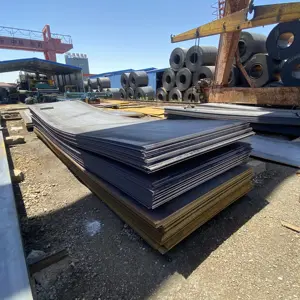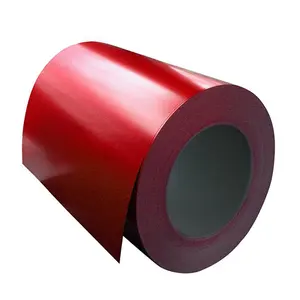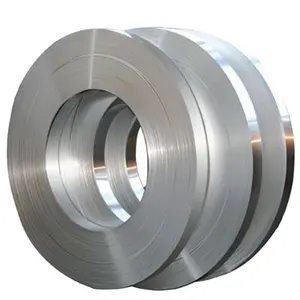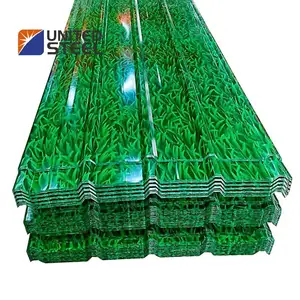Popular in your industry












































































Top categories
About double storey warehouse
A multi-level storage facility serves as a commercial edifice for the storage, distribution, and handling of goods across two tiers. Such warehouses exploit vertical space to enhance inventory management and minimize the building's spatial footprint. Alibaba.com showcases an assortment of multi-level storage facilities to meet varied commercial requirements, all boasting sophisticated design and structural soundness.
Types and Characteristics of Multi-Level Storage Facilities
Among multi-level storage facilities, there exists a spectrum of designs, each customized for particular storage needs and business operations. Some facilities are constructed with lofty ceilings and spacious layouts to house large items or machinery, while others are divided into sections for systematic and orderly storage. Temperature-controlled environments are vital for businesses that handle perishable commodities, preserving items such as foodstuffs or pharmaceuticals at ideal temperatures. Facilities intended for heavy-duty industrial use may be equipped with fortified flooring and extra structural supports to accommodate substantial machinery and equipment. Selecting the appropriate type of facility is a critical decision that should reflect the operational requirements and inventory profiles of the enterprise.
Structure and Physical Components
The architecture of a multi-level storage facility is a marvel of contemporary engineering, amalgamating various elements to forge a robust and functional space. A steel framework of vertical supports and horizontal beams constitutes the core of the structure. This is augmented by floor decking crafted from metal or concrete, ensuring the facility can bear the weight of heavy loads and machinery. Access to the facility's upper level is facilitated by staircases and cargo lifts, engineered for the efficient transport of hefty goods. The outer walls typically feature insulated panels to preserve internal temperatures and curtail energy expenditures. Moreover, the roofing system is designed to shield the interior from the elements while permitting natural light to penetrate when feasible.
Materials and Their Properties
The selection of materials for constructing multi-level storage facilities is pivotal, with steel as the foundational element due to its robustness and resilience. Steel variants such as Q235 and Q355 are chosen for their load-bearing capacity and resistance to deterioration, rendering them ideal for the structural framework. Concrete is frequently employed alongside steel, particularly in flooring, to provide a sturdy foundation capable of enduring the pressures of stored merchandise and the ongoing traffic of handling equipment. These materials are chosen not only for their structural attributes but also for their sustainability and maintenance ease, ensuring the facility remains a durable asset for the business.
Business Usages and Applications
The multi-level storage facility is a versatile edifice that integrates seamlessly into various commercial landscapes. In manufacturing, it enables the strategic storage of raw materials in proximity to production lines, thereby diminishing lead times. Retail enterprises gain from the ample space for stock accumulation, a boon particularly for e-commerce entities that maintain extensive inventories. For logistics and distribution, these facilities act as pivotal hubs in the supply chain, expediting the flow and turnover of goods. The additional level can be judiciously utilized for office space or employee areas, consolidating administrative operations within the premises. The influence of these facilities on operational efficacy is significant, often resulting in cost reductions and enhanced service delivery.
Functions and Tasks
A multi-level storage facility is engineered to fulfill a multitude of functions beyond mere storage. It plays an active role in the supply chain, aiding in the sorting, packaging, and dispatching of merchandise. The design typically supports an efficient material flow, curtailing handling times and mitigating the risk of damage during transit. Cutting-edge facilities may integrate automated systems that employ robotics and conveyor belts to transfer goods between levels, optimizing the storage and retrieval process.
Features and Unique Selling Points
The attributes of multi-level storage facilities distinguish them in the commercial property market. These structures often feature sophisticated security systems, including surveillance cameras and secure access points, to safeguard valuable stock. Energy efficiency is another hallmark, with features like skylights, photovoltaic panels, and LED lighting reducing both carbon emissions and operational expenses. The potential for customizing the interior to meet specific business requirements, such as installing intermediate floors or specialized storage solutions, enhances the allure of these facilities. These distinctive selling points render multi-level storage facilities an appealing choice for businesses aiming to refine their operations.
Benefits and Positive Outcomes
The advantages of investing in a multi-level storage facility are numerous. By leveraging vertical space, companies can amplify their storage capacity without expanding their land use, leading to savings in property costs. The design of these facilities often allows for adaptability, enabling businesses to modify the space to suit evolving inventory needs without incurring significant refurbishment expenses. Enhanced inventory management and expedited order fulfillment are direct outcomes of the organized and effective spatial utilization, which can markedly boost customer satisfaction and fortify a company's competitive stance.
How to Use and Operate Effectively
To operate a multi-level storage facility effectively, it is imperative to devise a strategic layout that complements the flow of goods from receipt to dispatch. Employing the correct equipment, such as forklifts and pallet stackers designed for multi-tiered operations, is essential for utilizing vertical space. Training personnel in the safe use of this machinery and in inventory management best practices is crucial. Moreover, the integration of a warehouse management system (WMS) can deliver real-time data to refine storage and retrieval operations, further boosting operational efficiency.
How to Choose the Right Model
Selecting the ideal multi-level storage facility entails a thorough assessment of present and prospective business requirements. Considerations should include the nature of the items to be stored, the necessary storage volume, and the frequency of goods movement. Other factors to weigh are the site's location and logistical accessibility, the local availability of skilled labor, and the potential for expansion. Engaging with architects and engineers who specialize in warehouse design can yield valuable insights into choosing a facility that satisfies all operational prerequisites.
Guidelines for Cleaning and Maintenance
Consistent cleaning and maintenance are essential for the durability and safety of a multi-level storage facility. Establishing a routine for regular inspections and cleaning of all areas is vital, with special attention to structural supports, roofing, and drainage systems to avert blockages and leaks. The upkeep of mechanical systems, such as elevators and climate control units, is also crucial, necessitating periodic servicing to maintain their functionality and efficiency. A proactive stance on maintenance can avert minor issues from escalating into significant disruptions to business activities.
Installation Process and Planning
The installation of a multi-level storage facility commences with meticulous planning. It encompasses site evaluations, design approvals, and the orchestration of diverse construction tasks. Erecting the steel structure is a pivotal stage, demanding precision and strict adherence to safety standards. Expert installation crews strive to ensure each component is accurately placed and secured, establishing the foundation for a safe, efficient, and enduring facility.
What are the customization options for a multi-level storage facility?
Customization possibilities for a multi-level storage facility on Alibaba.com are extensive. Clients can specify dimensions, select from an array of wall and roof cladding materials, and incorporate additional features such as insulation, ventilation systems, and bespoke door configurations. The capacity to tailor the facility to a business's unique operational needs is a significant benefit, resulting in a structure that fully supports each client's distinct processes.
What are the safety considerations for a multi-level storage facility?
Safety considerations for a multi-level storage facility cover an extensive range of aspects. Ensuring structural integrity is crucial, guaranteeing the edifice can endure the loads and stresses of storing and handling merchandise. Fire safety protocols, including detection systems, sprinklers, and well-marked exits, are imperative for safeguarding both inventory and staff. Moreover, the design must conform to local construction codes and regulations, which dictate everything from material robustness to the dimensions of staircases and the capacity of lifts.
What support services are available for multi-level storage facilities on Alibaba.com?
Alibaba.com provides a comprehensive suite of support services for multi-level storage facilities. These services grant access to vendors offering pre-construction consultations, bespoke design services, and after-installation support. Buyers can engage with seasoned experts who will guide them through each phase of the process, from the initial concept to the ultimate installation, ensuring the facility meets their specific commercial needs and adheres to industry norms.













